
A strong back keeps you active and pain-free. Wide rows and close rows both strengthen the back muscles, but they differ enough to consider which to use when working out. While both rows involve sitting and pulling back against resistance, you keep your arms high and wide to target the trapezius and rhomboid muscles of your upper back during a wide row. In a close row, you keep your arms low and close to your body to target the latissumus dorsi muscle of middle back.
Wide Rows
You can perform rows at the gym using a machine or at home with a resistance band or tube. At the gym, use a seated machine with a cable attached to a bar. To use the row machine, sit tall with your feet on the foot pads. Hold the bar in front of your chest with your hands wide, your arms just below shoulder height and your shoulders rolled back. As you exhale, pull the bar toward your chest and squeeze your shoulder blades together. As you inhale, extend your arms back to the starting position. To use a resistance band, wrap the band around your feet, extend your legs in front of you with your knees slightly bent, and follow the same movements for the upper body.
Close Rows
Just like the wide row, a close row may be done with a machine or resistance band. Rather than a bar at the end of the cable when using a machine, you use two handles instead and increase your resistance. With a resistance band, switch your grip. Using either the row machine or resistance band, grasp the handles with your palms facing each other, your arms extended in front of your navel and your shoulders rolled back. As you exhale, pull the handles toward navel, allowing your elbows to skim your sides. As you inhale, return your arms to the starting position.
Differences
The main difference in execution between the rows is hand position. In a wide row, your hands stay high and wide, targeting your trapezius and rhomboid muscles as well as the rear deltoid muscles at the back of your shoulders. By keeping your arms low throughout a close row, the focus shifts toward the middle and low back and targets your latissimus dorsi, the major muscles of your back. While the close row requires the use of your shoulder muscles, the lats are responsible for extending the shoulder joint and do most of the work. Since the latissimus dorsi tend to be stronger than the other back muscles, you'll be able to use more resistance for your close rows.
Back Workout
For a full back workout, try two sets of 12 to 16 repetitions of both wide and close rows. Select a weight or resistance that leaves your muscles feeling fatigued after the twelfth repetition. Increase the resistance when you move from your wide to close rows. To prevent back injuries during rows, avoid rounding your back or using excessive resistance. Sit tall and engage your abdominals throughout the exercise. To keep your wrists safe, keep them straight and aligned with your forearms. Include rows in your regular workout or do them on their own. Either way, warm up before working out and include rhythmic movements that warm up your back muscles to avoid injury. After your rows, engage in gentle, post-workout stretches to release your back. Child's pose is a simple stretch that releases the entire back. Sit on your heels and reach your arms behind or in front of you, bringing your face and back to the floor. Either hold this position for 30 to 60 seconds or shift your arms or hips side-to-side to maximize the stretch.

Related Articles

How to Make Your Arms Not Hurt in ...
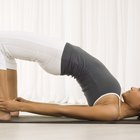
Easy Exercises to Tighten Loose Skin

How to Start a Seiko Kinetic Watch

How to Get a Senior Into a SUV

How to Drive a Horse Drawn Carriage
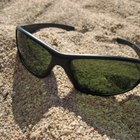
How to Adjust Maui Jim Plastic Frames

How to Prevent Tennis Racket Blisters

Instructions for a Cosco High Chair
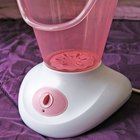
How to Use the Facial Sauna
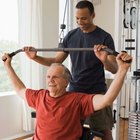
Difference Between Total Gym XL & Xls

How to Tighten Loose Ligaments

How to Make a Regular Bra a Racerback

Icon Alliance Face Shield Replacement ...

How to Put in Double Flare Ear Plugs

Lifting Techniques for Elderly Falls
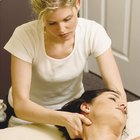
Can You Do Neck Exercises to Prevent ...

How Do I Use a Norelco Shaver?

Bungee Jumping in New Jersey

How to Figure Out the Size of Your ...
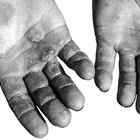
Callus From Pullups
References
- National Academy of Sports Medicine Essentials of Personal Fitness Training, Michael A. Clark et al
- American Council on Exercise Fitness: Seated High Back Row
- American Council on Exercise Fitness: Seated Row
Writer Bio
Laurie Schott comes to the world of fitness and wellness with a passion for coaching people on their journey to wellness. Taking a holistic approach to wellness, Schott's training spans Eastern and Western approaches. She is a Certified Posture Alignment Specialist (Egoscue University), an RYT-200, and an AFAA certified personal trainer. She holds a Bachelor of Science in finance and a Master of Science in information systems from the University of Maryland.
Photo Credits
Digital Vision/Photodisc/Getty Images